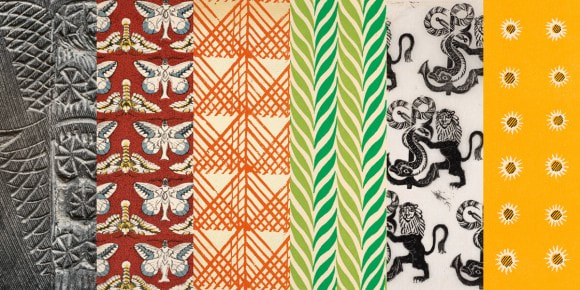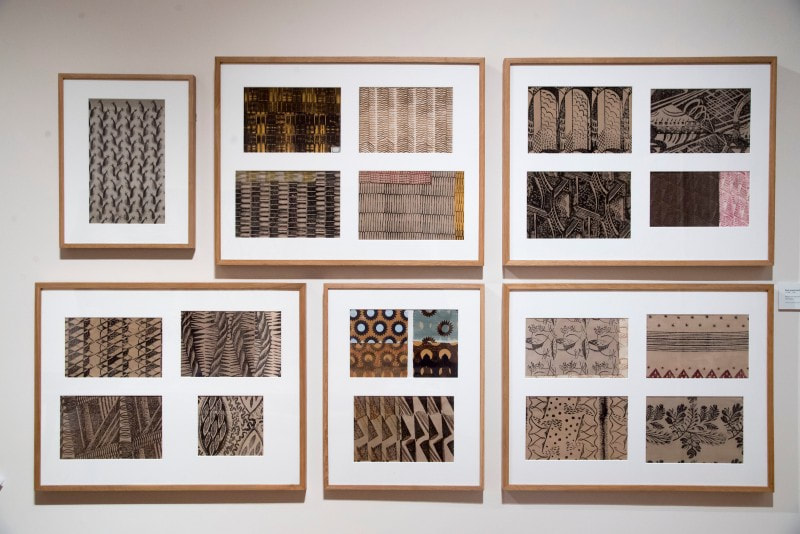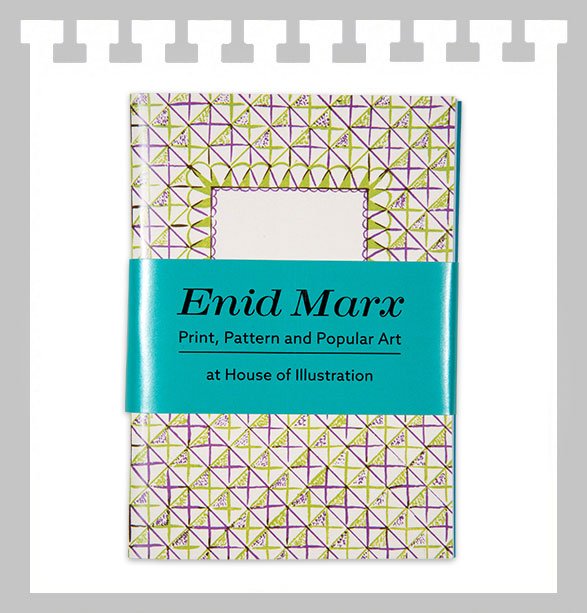|
I am quite a fan of the House of Illustration and go there relatively frequently. They have no permanent collection, instead exhibitions that change every few months. The museum has three galleries. The main gallery, which presently houses the Enid Marx show that is the focus of this blog, and two South Galleries. The smaller of those has a shifting but constant display of Quentin Blake's illustrations. The larger one changes frequently and currently holds a fine display by John Vernon Lloyd, more of him later. Enid Marx, pictured above with a cat on her shoulder and bearing more than a passing resemblance to my grandmother, was an artist, illustrator, designer as well as other things. She was a protege of Paul Nash, of whom I also like. Enid Marx was prolific and successful and if you go to her show, you will recognise her design for the Bakerloo line which can still sometimes be seen on the older trains. Marx used woodblocks to make fabric and pattern prints. She carved the woodblocks herself and the first room contains her wood carving tools, and a couple of the carved blocks. One of them, which bore a strong resemblance to an African mask was displayed next to the print it had produced. Her designs are strongly geometric and often tessellated. Many of the prototypes are beige but colours appear later. Some of the designs are complex in the way that they interweave and seem not to repeat. This I suspect was done by simply turning the printing block. Some of it reminded me strongly of Agnes Martin. Marx was fairly prolific in this regard and was responsible for the design of Utility Fabrics. These were cheap fabrics to be given to those whose houses had been bombed out or returning soldiers so that they can furnish their new homes. The genius of Marx's designs was that they were integral to the fabric and thus could hide the defects in the cheap material used. My favourite of these was a curved shell design. Marx also produced illustrations and book designs (as in the above). There are several of these on display and I particularly like the geometric book design that you can see above right. It is simple but quite elegant. She also produced designs for stamps, including stamps for the Israeli postal service amongst which was my favourite a large pouty biblical looking blue whale. Sitting on one wall were several regal looking prints of cats. Cats particularly but nature in general are a recurring theme. The cats depicted are usually the same bread of the cute little creature perching on her shoulder in the first photo. Not content with this panoply of achievements there are also on display some charming watercolours as well as pottery she designed. Some of it now seems quite chintzy but there were some very characterful piggybanks that stood out. As is often the case with the House of Illustration the show was artistically, historically and intellectually interesting. The larger south Gallery contained the work of John Vernon Lloyd, which it seems to me has a touch of the William Blake, but also of the Terry Gilliam about it. The display contains illustrations he produced for Alice in Wonderland, Alice through the Looking Glass and The Snark by Lewis Carroll as well as Finnegan's Wake ans Ulysses by James Joyce. The above illustration is from Finnegan's Wake. The illustrations all have similar themes. There is a strong geometric element and an interest in words and numbers. There is very fine detail and also a somehow monastic or mythic quality to them. They remind me of gilded illustrations in old bibles (and the whole thing inspired me to hurry off to the British Library afterwards to have a look at them). Of these illustrations my favourite we Yawn's Inquest from Finnegan's Wake, which had this swirling geometric design called a Omphalos at its centre. Various sketchbooks and detailed ideas abound (such as the above). Some of the most interesting of these were for the Lewis Carroll books, such as the one focusing on the number 42 including a depiction of a magic cube that adds up to 42. This as well as another illustration called 6 impossible things before breakfast made me realise that Carroll must have been a major influence on Douglas Adams.
In addition to this there was a wall of tiny sketches, all of excellent quality and occasionally humour as Lloyd had taken it upon himself to do a sketch a day for a year. There are also two larger drawings, occupying both sides of a stand in the middle of the room and I was particularly taken by the chaotic interior of The Back Basement of 76 Charlotte Street, drawn in loving details. Like all good museums I had gone for something specific, which had been well delivered but also encountered something unexpected and interesting. As usual I would recommend it.
0 Comments
Leave a Reply. |
Archives
June 2024
Categories |







 RSS Feed
RSS Feed